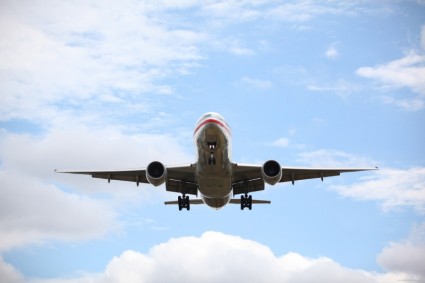 Did you know that traveling can contribute to the development of Deep Vein Thrombosis (DVT)? Whether the mode of travel is airplane, train, or car, it’s the relative immobility that puts us at risk of developing blood clots in the legs. There are a few simple strategies you can implement to help keep your legs moving and your blood flowing and hopefully help reduce your risk of DVT.
Did you know that traveling can contribute to the development of Deep Vein Thrombosis (DVT)? Whether the mode of travel is airplane, train, or car, it’s the relative immobility that puts us at risk of developing blood clots in the legs. There are a few simple strategies you can implement to help keep your legs moving and your blood flowing and hopefully help reduce your risk of DVT.
- Walk often – The more frequently you move and walk the better your legs will feel. This is because activating your calf muscle pump will propel venous blood out of your lower legs and back toward your heart, which is the direction it should be heading. This can be as simple as walking up the aisle in an airplane, taking a short walk at a rest stop if you’re driving, or walking in the airport terminal before flights, in between flights, and afterward. It doesn’t have to be an extended on foot journey, even walking for a few minutes will clearly help get venous blood moving in the right direction.
- Pedal pushes – We’ve all been stuck in the window seat of a cramped airplane when you just feel like you can’t get up and move around. The next best thing to actually getting up and walking is to pump your feet while you’re sitting. Just extend your legs to slightly more than 90 degrees and raise your toes while keeping your heels planted. It should feel like the same motion as braking in your car. Do these for 60 seconds and you’ll be using your calf muscle to move venous blood out of your ankles and back toward your heart. If you’re on a long journey, try to do this every ten minutes or so.
- Compression stockings – For long flights and road trips it is advisable to wear graduated compression stockings. This can help prevent and reduce swelling associated with traveling and keep your legs feeling better so you can enjoy your trip. The stockings should be put on the morning of your trip and left on until you go to bed. If you plan on sleeping on your journey sitting up in a car or airplane, definitely keep your stockings on as they will provide gentle pressure to prevent fluid and blood from settling in your ankles and lower legs.
- Hydrate – Make sure and drink plenty of water on your trip and skip the alcoholic offerings. Alcohol will have a net effect of dehydrating you and make you feel sluggish and tired. This means you’ll be fighting some alcohol induced fatigue when you need to get up and start walking or start doing your pedal pushes. When you drink lots of water you’ll be keeping your muscles well hydrated and you’ll have the added bonus of needing to use the restroom which is a great excuse to get out of your seat and take a short walk!
- Wear comfortable clothing – Tight clothing can restrict blood flow and prevent the normal return of venous blood from the lower legs back to the heart in some superficial veins. Wearing comfortable clothing while traveling ensures adequate blood flow through your leg veins and makes it easier to move around and keep walking in the midst of your journey.
If you have more questions about traveling and vein issues, please contact Spartz Vein Clinic at 651-797-6880.
